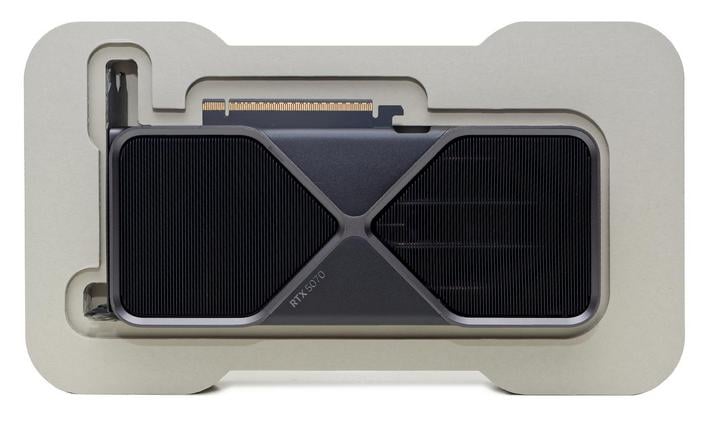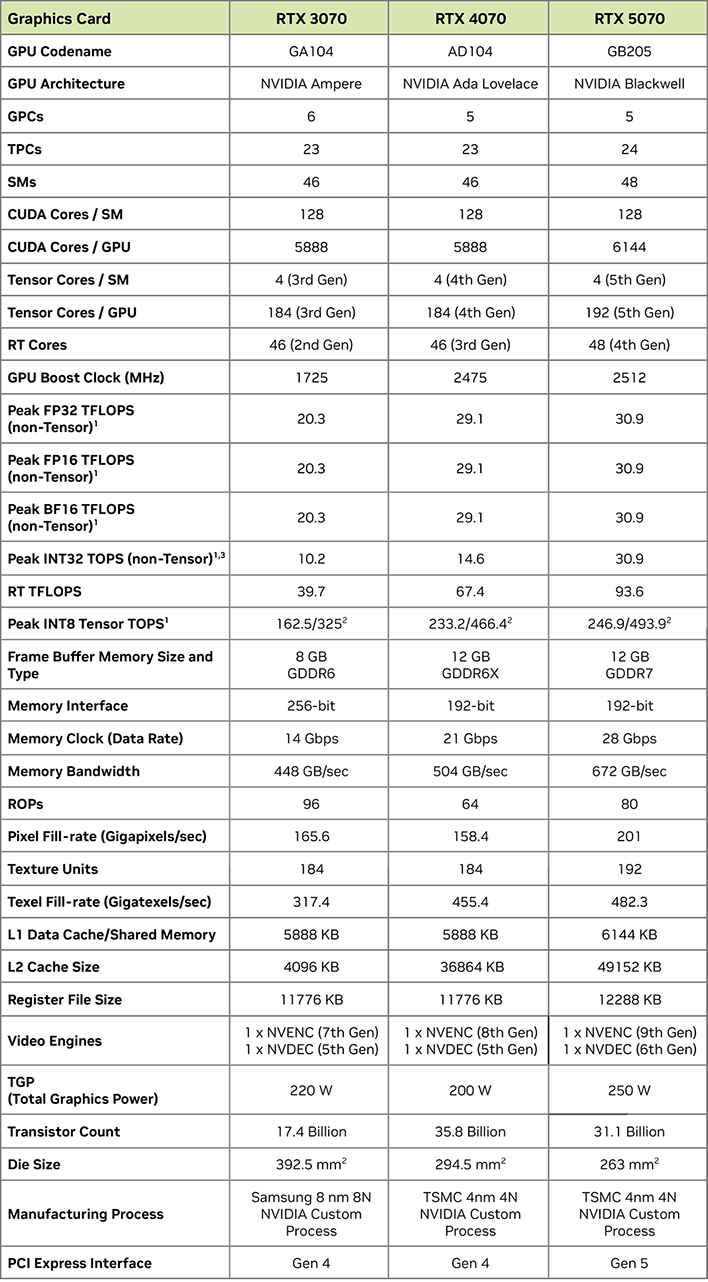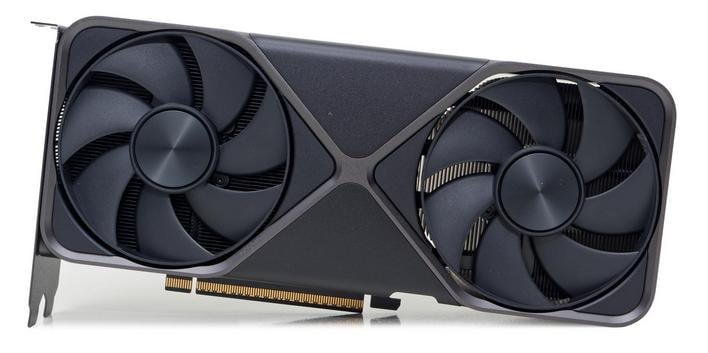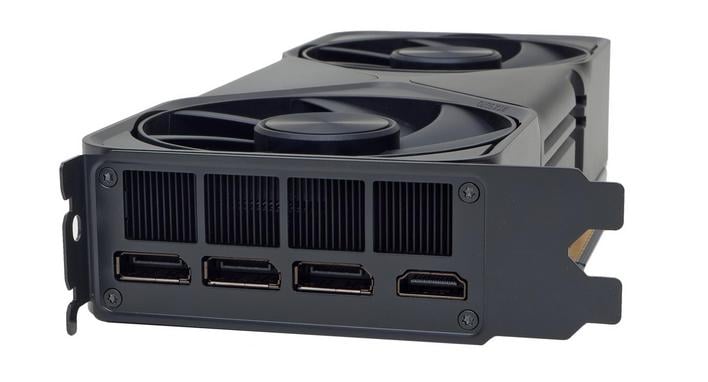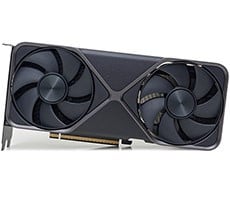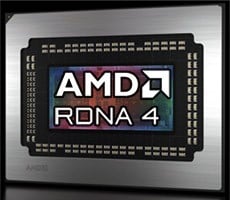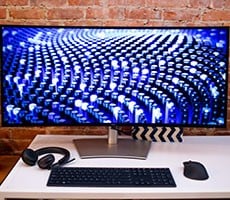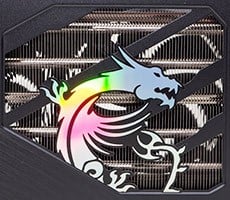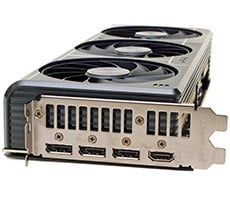GeForce RTX 5070 FE Review: NVIDIA’s More Affordable Blackwell Tested
| NVIDIA GeForce RTX 5070 Founders Edition: MSRP $549 The final member of the initial GeForce RTX 50 series launches today, the mid-range GeForce RTX 5070, and we've got the full scoop with copius benchmarks and overclocking data.
|
|||

|

 |
||
NVIDIA is launching the final member of the initial batch GeForce RTX 50 series cards today, the GeForce RTX 5070. First announced at CES in early July, the GeForce RTX 5070 will be the most affordable Blackwell-based GPU for the time being, or at least until NVIDIA releases information regarding potential GeForce RTX 5060 and RTX 5050 class products.
NVIDIA CEO Jensen Huang famously proclaimed the GeForce RTX 5070 was ‘faster than a 4090’ during his keynote at CES, but as most of you know by now, that statement requires some qualification. In terms of pure raster performance, the GeForce RTX 5070 represents a similar upgrade over the older RTX 4070, that its higher-end siblings offer over their previous-gen counterparts. Factor in DLSS 4 multi-frame generations, however, and the GeForce RTX 5070 can smooth out in-game animation at a much higher rate.
Alas, we’re getting ahead of ourselves. Let’s get to know the GeForce RTX 5070 Founders Edition, before we dive into some benchmarks. On with it...
NVIDIA GeForce RTX 5070 Founders Edition Specifications
The GeForce RTX 5070 is based on yet another GPU in NVIDIA’s Blackwell-based portfolio, the GB205. If you recall, the GeForce RTX 5070 Ti and RTX 5080 are based on the larger GB203, and the flagship GeForce RTX 5090 on the larger-still GB202.
In its fully-enabled form, the GB205 GPU features 5 GPCs, 25 TPCs, 50 SMs, and six 32-bit memory controllers, for an aggregate 192-bit memory interface. Tunneling a little deeper, the GB203 packs a total of 6,400 CUDA Cores, 50 RT Cores, 200 Tensor Cores, 200 Texture Units, and 80 ROPS. And its cache configuration includes 6,400KB L1 Cache, a 12,800KB Register File, and 49,152KB of L2 Cache.
All told, the chip is comprised of approximately 31B transistors and it’s the smallest xx70-class GPU in a few generations at only 263mm2, despite being manufactured on the same process as the previous-gen AD203.
The GeForce RTX 5070, however, doesn’t feature a full implementation of the GB203. On the GeForce RTX 5070, one TPC and two SMs are disabled, which brings the core counts down to the 6,144 (CUDA), 48 (RT) and 192 (Tensor), and the L1 and register file down to 6,144KB and 12,288KB, respectively.
The GB203 on the RTX 5070 is linked to 12GB of GDDR7 memory operating at a speedy 28Gbps, for peak memory bandwidth in the 672GB/s range, and it features one of NVIDIA’s latest encoders and decoders. And total board power is rated for 250 watts.
When compared to the last couple of generations of xx70-class GPU, the GeForce RTX 5070 is an across-the-board upgrade in every category. We’ll find out how all of those specs translate in the real-world soon enough, but we should also remind you that Blackwell introduces a host of updates and new features as well. You can read more about them in our initial architecture coverage, here.
Checking Out The NVIDIA GeForce RTX 5070 FE
The GeForce RTX 5070’s industrial design and overall aesthetics, resemble the higher-end GeForce RTX 5080 and 5090 Founders Edition cards, but the RTX 5070 is significantly smaller and more compact.The card measures only 9.5” long, two-slots wide, and about 4.5” high – the shroud is barely higher than the case bracket. It's a dense package that uses premium materials thoughout, and presents as a “mini-5090”.
Unlike its larger siblings, the GeForce RTX 5070 doesn’t feature a “Double Flow Through” cooler design, which allows both cooling fans to blow air straight through the heatsink. It’s a Single Flow through design, similar to the previous-gen GeForce RTX 4070. NVIDIA’s newly designed cooling solutions on the RTX 50 series cards, however, are more capable than previous-gen offerings, while also emitting less noise.
At the top of the card, you'll find the familiar 12VHPWR 16-pin connector, also used on the RTX 40 series. On the RTX 5070 though, the connector is angled off the back on the PCB, and recessed slightly in the shroud. This configuration should allow for easier cable management and minimize the need to bend the power feed in thinner PC cases. The included power adapter requires two PCIe 8-pin feeds, but the cabling is longer and far more flexible than the adapters included in older RTX 40-series cards. The connector on the adapter is also beefier and emits a solid "click" when pushed fully into place.
The GeForce RTX 5070 features a cold plate, with a dense array of heatsink thin-fins, linked via heat pipes, similar to the RTX 5080’s – just smaller. NVIDIA also uses a more traditional phase-change TIM on the RTX 5070, so none of the complexities associated with liquid metal are at play.
Outputs in the GeForce RTX 5070 (and other RTX 50 series cards) include a trio of DisplayPorts (2.1b) and a single HDMI port (2.1b). Their orientations have been reversed versus previous-gen cards though, and the case bracket features a solid front bezel with an anti-fingerprint coating.
And with that you've gotten a tour of the GeForce RTX 5070 Founders Edition's design, so let's get to some benchmarks...

